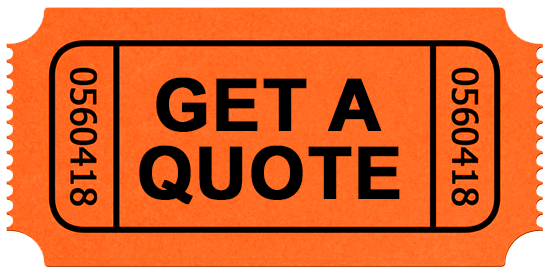It’s taken us since 2004 (that’s 82 Internet-years) to come up with a super-comprehensive list of everything we need to know to understand your business, get you an accurate quote and build a site you’ll love that markets your company according to your business principles and vision.
And we just can’t keep it to ourselves.
So, whether you end up getting on board with us or going elsewhere, here’s a handy checklist of questions your web developer should be asking–and that you’ll need to be able to answer–in order to build the website best suited to you and your business.
Hosting and Domain Name
- Do you already have a URL (registered website address) you plan to use? If not, do you need help selecting and registering a good URL?
- If you have a current website, who is your hosting provider? Are they meeting your needs with respect to storage space, bandwidth, databases, email and price? Do you need to move to a new hosting provider?
- Do you have full access to FTP, databases, domain names? (If you don’t know what these things are, we can help.)
- Can you provide usernames and passwords for FTP, databases, domain name registration and hosting?
Logistics and Planning
- Are any other companies or contractors working with you on the development of the website?
- Do you have a budget you are trying to meet?
- Do you have a completed site architecture (an outline of all clickable items and menu-items/pages with a hierarchy, if applicable) or a wireframe (a rough sketch of the location of major elements on the home or inside pages) for the new website or will this be part of the scope of work?
- When do you need your website up and running?
Marketing Goals
- What is the purpose of the website: are you selling something or is it informational or brochure-like in nature?
- What types of actions do you want your visitors to take on your website–buy a product, click on a button, fill out a form, call a phone number?
- Describe your target audience in terms of age, income, profession or other demographics.
- What business values or image do you want expressed on the site?
- What makes you different from your competitors and why would people want to do business with you rather than a competitor?
Design, Look and Feel
- If you already have a website, what’s good about it (a certain functionality, a look, the content etc.)? What frustrates you about your current website?
- What websites have you seen that you like (does not have to be industry specific)? Does another website (perhaps a competitor) have a feature or look that you’d like to have, or that you really hate? Can you describe the style of website you want?
- Are there specific company colors that need to be implemented such as logo colors, brochure or press release materials? Can you provide the Pantone numbers for them?
- What are the three things that are most important in the design of your new website?
Website Functionality
- Will front-end users need to log in to your site for any reason (e.g. to see proprietary content or to gain access to their account)? What kind of content will be in this protected area?
- How many web forms does your new site need and what is the purpose of each? How will the data from the form be handled (e.g. sent to your email address and/or stored in a database etc.)?
- Do you need any social media features built in (such as clickable Facebook, twitter etc. icons or feeds)?
- Are there third-party applications that will need to be integrated and if so which ones?
- Do you need any subscription services? Or do you use a third party for any part of the subscription content delivery or payment?
- Do you wish to use any “content-on-demand” features (hidden elements that are made visible with certain actions)?
- Do you require an online chat feature?
- Do you need an updatable events calendar?
- Do you need an internal site search feature?
- Does your site need a blog or a forum?
- Will you be offering advertising on the site? How should it be implemented (e.g. in a banner, in the sidebar)?
- Do you have any other specifications or need specific functionality that has not been addressed?
Image and Text Content
- Do you have a logo or will one need to be created? If you have a logo, can you provide the original artwork files (usually in .eps, .ai or .pdf format)?
- Do you have any specific photos you plan to use—do you own the rights to these photos and can you provide them in high resolution files? Or will we need to find/create images for the website?
- If video or audio is to be part of the new website can you provide us with the proper files? About how many video or audio files are required to be implemented?
- Do you have any other media, such as PDF documents, that need to be incorporated and will you be creating these or will we?
- Will you need a favicon (small icon that appears in some browsers address bars) created?
- About how many pages will the finished website be?
- Do you have a tagline you wish to use or do you need help creating one for your site?
- What information must be on the home page?
- What information (e.g. features, sections or contact info) must always be visible or emphasized throughout the site? Do you want contact information prominently displayed?
- Do you have the content for the website or will content creation be a part of the scope of work?
- Will we implement your text and image content (as opposed to overall layout/design elements) into your website or will you?
Accessibility
- All of our sites are mobile friendly (incorporate responsive design) but do you have any specific mobile requirements?
- Will your visitors require any special needs (i.e., screen reader ready, larger fonts)?
- Do you need multi-language support?
e-Commerce
- Will you need a shopping cart system for e-commerce content (comes with content/inventory/shipping/pricing and content management system)?
- Do you have an e-commerce system you already use? If so, which one?
- About how many products are you selling? Do they need to be broken down into categories (eg. dresses, shoes, sweaters)? Do they need to be broken down into sub-categories (such as colors, sizes, styles etc.)?
- Do you want to suggest related products to your customers
- Will you be selling/shipping your product internationally or just within Canada?
- How will your customers pay? With PayPal (etc.) or by using credit cards with a merchant account? Do you need a payment gateway set-up (a secure programmatic link between what your customers want to buy and the credit-card approval procedure of your bank)?
Website Updating and Administration
- Do you need a content management system (CMS—like WordPress, Joomla or a proprietary system) to manage (edit/change/delete) the content of your website yourself or would you prefer that your developer do that? (If you are selling online with an e-commerce package, a CMS is already included).
- If you are implementing content yourself through a CMS, would do you need training for making website updates?
- Will you need multiple levels of access to editable content (e.g. some people can write content but cannot publish it, etc.) and the ability to manage content publishing approval processes?
Search Engine Optimization
- Do you have a Google Analytics account? If so, can you provide access?
- What are the basic keywords you want to rank for?
- What are a few of your main competitors?
- If you want to do pay-per-click advertising, what is your daily budget for your given search terms?




 A week-long vacation in the Caribbean island of your choice, a well running used car and a website that you can be proud of are all going to cost you more than a $1,000 bucks. Your website is your 24-hour, 365 day-a-year, tireless salesperson and the face of your company. Go cheap and chances are that your website will be as awful as the designer that created it. In our experience, going “cheap” comes back to bite you in a most unpleasant place because now you’ve got to fork out for a professional web designer plus the cost of your super-cheap designer.
A week-long vacation in the Caribbean island of your choice, a well running used car and a website that you can be proud of are all going to cost you more than a $1,000 bucks. Your website is your 24-hour, 365 day-a-year, tireless salesperson and the face of your company. Go cheap and chances are that your website will be as awful as the designer that created it. In our experience, going “cheap” comes back to bite you in a most unpleasant place because now you’ve got to fork out for a professional web designer plus the cost of your super-cheap designer. “My neice is pretty tech savvy and she’s willing to do my website in her spare time for a big discount.” Cringe-worthy. Hiring someone that’s related to you is always a bad idea. First, you can’t fire them. Second, disagreements over how the site should look and when–if ever–it will actually be finished often lead to an awkward family impasse that puts a kibosh on your relationship. Not worth the money you were trying to save, that’s for sure.
“My neice is pretty tech savvy and she’s willing to do my website in her spare time for a big discount.” Cringe-worthy. Hiring someone that’s related to you is always a bad idea. First, you can’t fire them. Second, disagreements over how the site should look and when–if ever–it will actually be finished often lead to an awkward family impasse that puts a kibosh on your relationship. Not worth the money you were trying to save, that’s for sure.



 If you give your web designer a down payment and they scurry off to work but you don’t hear from them until you call wondering what’s going on, it’s probably time to hoist-up a big red flag. Even if you did hammer out what you thought was every detail at the outset of your project, we find that there’s always a thousand questions, comments, improvements and suggestions that come up during the design and implementation of any website. So not hearing from your web designer is often because they have way too many clients and haven’t even started your project yet or simply don’t care enough to ask the important questions. Both are bad: a good web designer always stays in contact and keeps the momentum going.
If you give your web designer a down payment and they scurry off to work but you don’t hear from them until you call wondering what’s going on, it’s probably time to hoist-up a big red flag. Even if you did hammer out what you thought was every detail at the outset of your project, we find that there’s always a thousand questions, comments, improvements and suggestions that come up during the design and implementation of any website. So not hearing from your web designer is often because they have way too many clients and haven’t even started your project yet or simply don’t care enough to ask the important questions. Both are bad: a good web designer always stays in contact and keeps the momentum going.
 If your web designer makes you come back to them for every little change after you website is live, you’ve got an awful web designer. These days, we have content management systems that let you modify most of your content without running back to your designer and (gulp!) paying them more money. And, what happens if your web designer “goes away?”
If your web designer makes you come back to them for every little change after you website is live, you’ve got an awful web designer. These days, we have content management systems that let you modify most of your content without running back to your designer and (gulp!) paying them more money. And, what happens if your web designer “goes away?” We’ve heard this one a few times: “I got this web designer to build my site and it looked great. But then one of my clients said he couldn’t view it properly on his phone. I went back to the designer and they said it would be even more money to make it mobile friendly.” Disreputable web designers use this “don’t-ask-dont’-tell” policy to put the squeeze on you. All web sites designed today should be mobile friendly–why alienate half your audience? Anyone who says “that’ll cost you extra” is a terrible web designer.
We’ve heard this one a few times: “I got this web designer to build my site and it looked great. But then one of my clients said he couldn’t view it properly on his phone. I went back to the designer and they said it would be even more money to make it mobile friendly.” Disreputable web designers use this “don’t-ask-dont’-tell” policy to put the squeeze on you. All web sites designed today should be mobile friendly–why alienate half your audience? Anyone who says “that’ll cost you extra” is a terrible web designer.

